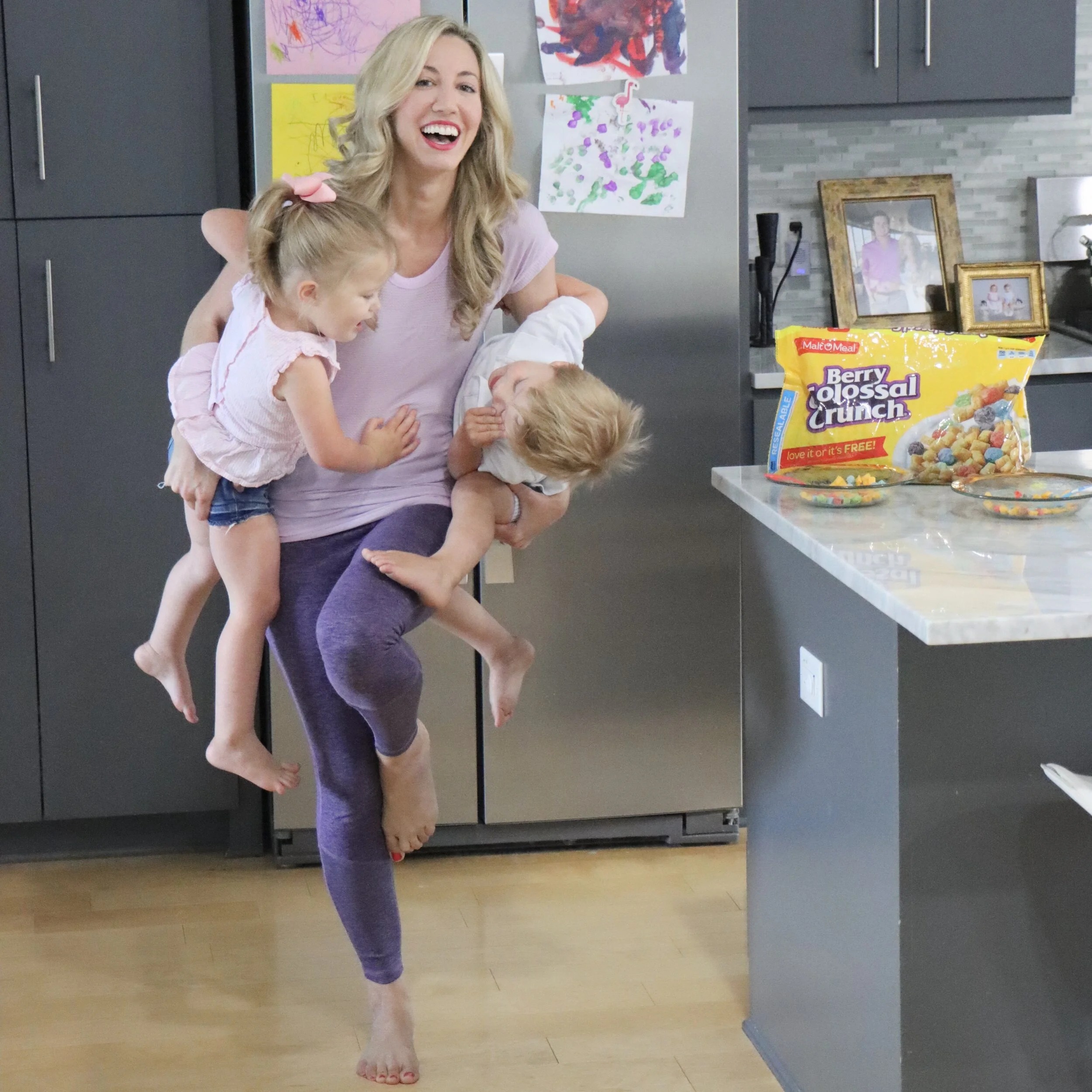11 Tricks to Get Your Kids to Actually Take Their Medications
Cue the Mission Impossible song, right? No matter the age—from baby to toddler to older child—getting kids to actually take their medications by mouth can be HARD. As a pediatric nurse practitioner and mom to twin toddlers, I’ve witnessed it all. They either don’t like the taste, they spit it out, they’re afraid of trying new things, or they just coincidentally decide it’s the right time to throw a tantrum EVERY time they see the medication bottle. Am I right? Ha! Whether it’s for a fever, an ear infection, reflux, or some other condition, sometimes taking an oral med is critical for little ones to get well. And THAT is why we must flex our creative muscles to make it happen!
So, I’ve flexed my creative muscles for you and have some ideas to share. However, I will preface this by saying you should always consult your child’s pediatrician and/or pharmacist regarding the best way to administer medications to your child (i.e. whether it can be taken with/without food, whether it can be crushed, etc).
Here are 11 tricks I’ve learned along the way to get kids to actually take their medications:
Use a syringe in babies and young toddlers.
Draw up the right dose of the medication in a syringe (the pharmacist can give this to you). Slowly squirt the medication toward the back side of the cheek near the gums (bypass the tongue and those taste buds!) and then squeeze cheeks together as they swallow. This will prevent it from dribbling out.
Sit your child upright.
No matter the age of the child, sit them upright – not lying down – to reduce the chances of the medication spilling out the mouth and to reduce any potential choking.
Give them some choice in the matter.
Instead of asking a Yes/No question like “Do you want to take your medication?” try asking in a way that gives them options, such as “Do you want to take your medication in a cup or a syringe?” Whether it’s just the choice of taking it by a cup or a syringe, giving them options like this improves your chances of cooperation while still capitalizing on a toddler’s need for power.
Make medication time FUN.
Put the medicine in their play teacup set, play their favorite song, or have a dance party every time the child takes their medicine! If there is a positive association with getting medication, then the chances of compliance increase.
Don’t forget about trying medical play!
We use this ALL the time in the hospital with our pediatric patients. Whether a patient needs a feeding tube, an IV, or a procedure done, we get teddy bears or dolls and simulate the process with the doll first. This allows the child to play out any anxieties they might have and familiarizes them with what’s going to happen. If teddy bear does really well “taking” his medication, then the child is more inclined to think they will do really well taking the medication, too!
Make the med taste good if you can.
Pharmacists can often add flavoring to medications—so consider asking them when you’re dropping off the prescription. Some pharmacies (like Walgreens) actually use a prescription flavoring service called FLAVORx that helps mask unpleasant tastes with yummy flavors (like watermelon, apple, banana, etc) and a cute little animated FlavorBot that helps the kids find the best flavor for their particular medication. Also, be aware that certain medications taste way better when they’re refrigerated (like liquid amoxicillin!). You can also consider camouflaging the medication in a delicious food/drink if it’s a liquid solution or a tablet that can be crushed. Apple sauce, yogurt, pudding, and ice cream are popular camouflage options! You could also put the medication in a spoon and then put ice cream on top of the medicine in the spoon—this way they taste something sweet first! No matter what you choose, just make sure your camouflage method is OK’d by the pharmacist beforehand.
Numb those taste buds beforehand.
If the flavor of the medication just isn’t appealing, then let them eat ice cream, have a popsicle, or put the medicine spoon in freezer beforehand! The coldness of those types of foods can numb the taste buds—which dulls the yucky taste and makes it easier to take an unappealing med!
Change the medicine’s formulation.
For example, if your child is unable to swallow a pill, then ask the doctor for a chewable or liquid version instead. Just talk to the pharmacist/health care provider about other options that might be available that could go down easier.
Explain to child, in terms they will understand, why they need the medication and how it will help.
Sometimes just talking it through with young children helps them have some level of understanding as to why they need to take the medication. When my son had an ear infection when he was 2 years old I explained to him that his ear was sick and needed help. I told him that if he took his medication then his ear will feel better and be happy again. We never had an issue getting him to take his antibiotic after that!
Use a reward system (sticker chart, new toy, or a special snack).
Rewards are a strong motivator in our house of toddlers. We used sticker charts, snacks, and dance parties as rewards during potty training recently and it worked like a charm. The sticker chart is probably my favorite method because it was very visual—and there’s nothing more exciting than picking out a sticker each time you take your medication successfully!
Teach kids how to swallow pills when they’re 4-5 years old—before they develop any fear of it.
If they are old enough and seem motivated and ready to learn something new, then it might be a good time to teach them how to take a pill. It’s usually best to practice with tiny bite-sizes of food first (like a sprinkle that would go on ice cream), and then gradually increase the size until they’re ready for the real thing. Here is a Kids Health article that details the process of how to teach your child to swallow pills!
Depending on the age of your child, hopefully a combination of these tips will help you get your child willing to take their medication. If you’re still having difficulty, then certainly reach out to your child’s pediatrician for further advice. I know this isn’t always easy, but you’ll eventually find a method that works for you!




